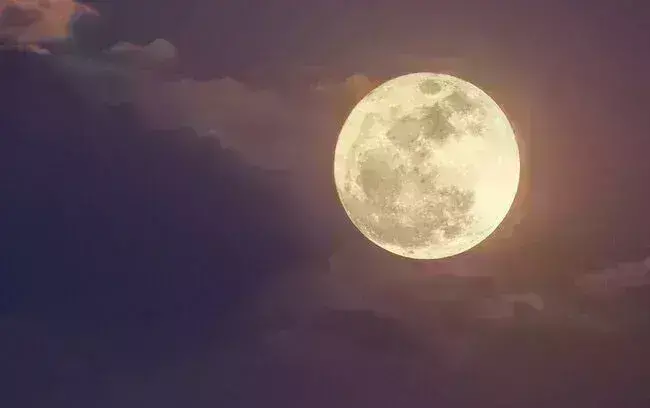Our moon is older than previously thought: Study
A recent study has revised the estimated age of the moon, revealing that it is approximately 40 million years older than previously believed.
image for illustrative purpose

A recent study has revised the estimated age of the moon, revealing that it is approximately 40 million years older than previously believed. Researchers conducted an analysis of crystals retrieved by Apollo astronauts during missions between 1969 and 1972 to pinpoint the moon's formation age.
During these Apollo missions, astronauts collected various lunar materials, including rocks, pebbles, sand, and dust. The study focused on lunar dust samples from Apollo 17's final crewed mission, which contained zircon crystals formed billions of years ago, considered a crucial indicator of the moon's formation.
Scientists have long speculated that the moon may have formed from debris resulting from a glancing impact with a planetary body roughly the size of Mars, with the energy from the impact leading to the melting of rocks, eventually forming the moon's surface.
These zircon crystals, described as the "oldest known solids" formed after the colossal impact, led University of Chicago professor Philipp Heck to conclude that the moon is at least 4.46 billion years old.
Professor Heck explained the significance, stating, "When the surface was molten like that, zircon crystals couldn't form and survive, so any crystals on the moon's surface must have formed after this lunar magma ocean cooled; otherwise, they would have been melted, and their chemical signatures would be erased."
Previous research had suggested a younger age for the moon, but this study is the first to employ atom probe tomography, a technique that analyzes structures at atomic levels, on lunar crystals.
The crystal sample underwent a complex process that included sharpening it into a tip using a focused ion beam microscope, followed by the use of UV lasers to evaporate atoms from the tip, as described by lead author Dr. Jennika Greer. Dr. Greer further explained that the atoms' movement through a mass spectrometer provided information about their composition and weight.
The researchers also noted that many of the atoms within the crystals had undergone radioactive decay, a process that involves the loss of protons and neutrons over time. By examining the proportions of different uranium and lead isotopes in the sample, scientists could determine its age, ultimately leading to the revised understanding of the moon's age.
Dr. Heck, who also serves as the curator in charge of the meteorite and physical geology collections at Chicago's Natural History Field Museum, expressed the importance of this discovery, saying, "It's amazing being able to have proof that the rock you're holding is the oldest bit of the moon we've found so far. It's an anchor point for so many questions about the Earth. When you know how old something is, you can better understand what has happened to it in its history."

